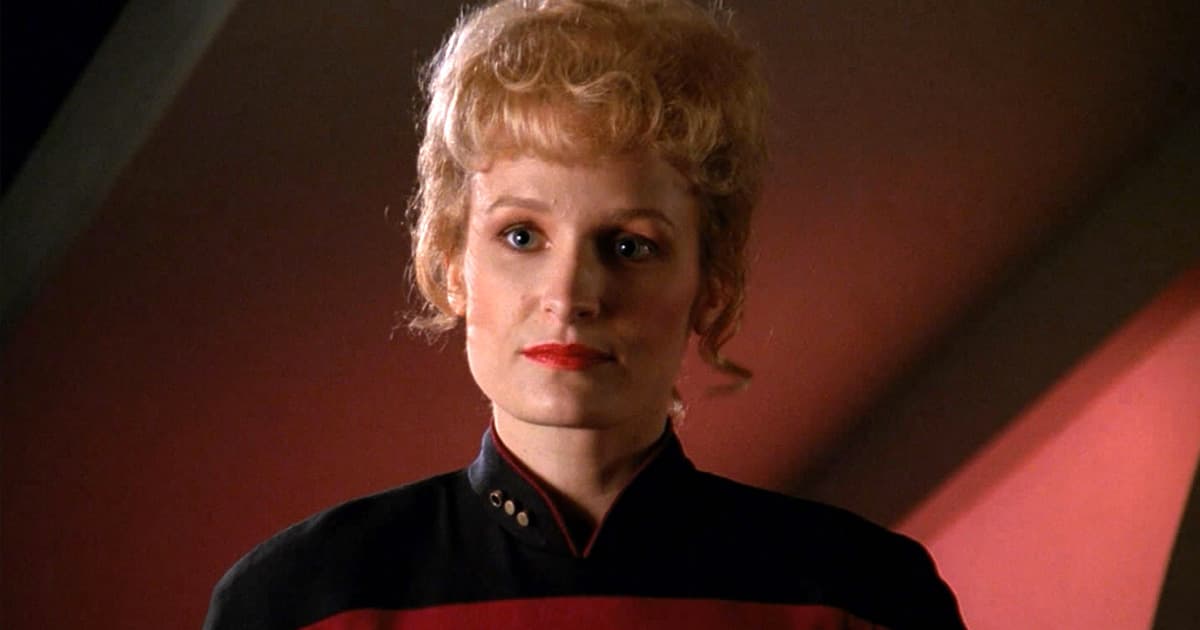ELIZABETH SHELBY
Task force lead - Fleet Redevelopment
Stardate 52111.1 -2375 • 5 min read • PROJECT PATHFINDER

I was worried I might see you in my doorway again, and I think I can guess what this is about.
Prometheus.
Well, take a seat.
Prometheus as I’m sure you well know, why else would you be here? … It was not one of our finest moments. But the mistakes made need to be put into the context that we made them in.
After 359 the next ‘big upset’ the Federation had was the loss of the Odyssey, followed closely by the Enterprise D. Captain Keogh was no fool, and took the sensible precaution of evacuating non essential personnel to Deep Space Nine. As a result, for the size of a Galaxy class the personnel losses were, without meaning to sound insensitive, minimal. For Starfleet, the years of experience lost were more significant than the much smaller number of lives.
Then we had the Enterprise D. Now, that really caused ripples through R&D. But we got lucky. Damn lucky, that we didn’t lose anybody. The Galaxy class reputation was crumbling faster than we could design, test and launch a replacement.
We needed help, and Command insisted that we bring in a Zakdorn advisory panel to review the current research, development and production schedules across all Federation shipyards. There were a few designs like the Defiant, Akira and especially the Prometheus that they took significant interest in. They barely had a foot in the door when they began telling anybody that would listen that Starfleet’s problem wasn’t its designs. It was the fact that ships required hundreds, in some cases even thousands of officers to operate them to their full potential.
The Defiant addressed that issue by being a single focus (weapons power) design, which works for a warship. But if you have a single focus (planetary survey) design… Like the Oberth. That ship would then be extremely vulnerable in a battle scenario. So it would require escorts. Which then brings us right back around to the initial problem we were trying to avoid by requiring too many personnel for any one mission.
One route that the Federation has always been reluctant to go down is automation. Every starship has always had a series of automated systems. But these are usually airgapped and/or require some sort of manual intervention to be used in any way other than their base operating parameters. There are a few reasons for that reluctance. One, is that truly automated systems that have significant cross functionality are very hard to secure. Starfleet learned that lesson the hard way during the Romulan War.
The other… Well. When he was Federation President Jonathan Archer would often be asked about the human cost of the NX-01s early missions. Every time, and there are multiple holo recordings to back this up, he’d respond the same way. He’d smile to himself, and recall a memory from one of their early missions where Subcommander T’Pol had cautioned him against going to a planet’s surface. He told her “Starfleet could have sent a probe out here, to make maps and take pictures, but they didn’t. They sent us, so that we could explore with our own senses.”
This ideal, this phrase has always been a core part of the Starfleet philosophy. So when the question of automation comes up, we always need to answer the question of whether we’re taking the ‘sentient’ element out of exploration. In simpler terms. Are we reducing starships to glorified probes?
This sentiment had always been ridiculed by the Zakdorn, and the back to back losses of two Galaxy class starships gave them the opening that they needed to push, hard, for a truly automated starship. One where the crew onboard were more of a token acknowledgement of Archerist ideology rather than an active consideration.
The last time you were here, I told you to watch this space after the end of the Intrepid Class Development program. With Prometheus as my intended successor to that project. I planned to make use of the advanced systems we designed to solve the requiring escort problem by allowing ships to become their own escorts. What was coined on the Prometheus as ‘Multi Vector Assault Mode’.
But I hadn’t planned for the minimal crew compliment. That was the work of the Zakdorn. They took my early designs and reworked them. Extensively. The ship wouldn’t just split into its own escorts in a battle scenario, but each component would have the systems required to operate fully independently. Three warp cores, three life support systems. Three deflector dishes. They even insisted that holo emitters were installed throughout the ship, the emergency medical hologram was doing well in the initial field tests and they voiced plans for emergency holograms for other key positions.
At the time I argued that we weren’t solving the core issue. We were just shifting the resource burden on the Federation from personnel to other rare materials required for starship component manufacture. On top of that, I had designed the Prometheus in response to the Borg threat, but as it was going through early field tests we were having to fight the Klingons instead, with the Dominion on the horizon. Both of whom were far more likely to board a vessel rather than outright destroy it.
But my objections were overruled. The Zakdorn insisted that a holographic security force would address the problem and reduce casualties. Command was all too happy to agree.
Then, we both know what happened next. As I feared, the Prometheus logs show that the first thing the Romulans did when they boarded was torture a Starfleet officer to deactivate the holographic security systems.
PROJECT PATHFINDER